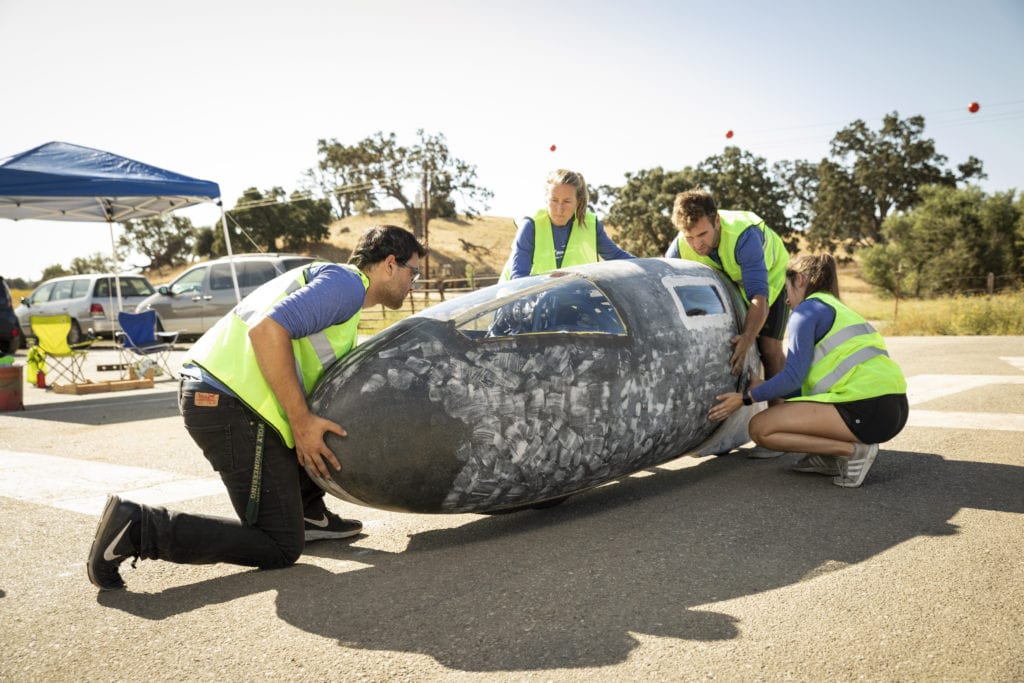Six College of Engineering majors will be recognized for awards and other accomplishments at the Statehouse in Sacramento on March 2.
A total of 16 Cal Poly students will be honored on the floors of the state Assembly and Senate. The group will be introduced to the Senate by Majority Leader Bill Monning, D-Carmel, and to the Assembly by Assemblywoman Megan Dahle, R-Bieber. Monning represents San Luis Obispo County. Dahle has a son who attends Cal Poly.
“Our students are doers who take pride in the creative process — building a vehicle that gets people across the country faster; creating a light-weight concrete canoe that slices through the water more efficiently; constructing a bicycle capable of setting speed records; or helping to explore the cosmos by finding — and harvesting — extraterrestrial sources of ice,” said university President Jeffrey D. Armstrong, who is accompanying the group to Sacramento. “They are our ambassadors of Learn by Doing. They represent like-minded counterparts in all six of our colleges. Their successes, in and out of the classroom, for which they will be recognized by our lawmakers in Sacramento show that these young people are leaders ready to take on real world challenges and succeed.”
The engineering students include:
Mason Breipohl
Elk Grove, California
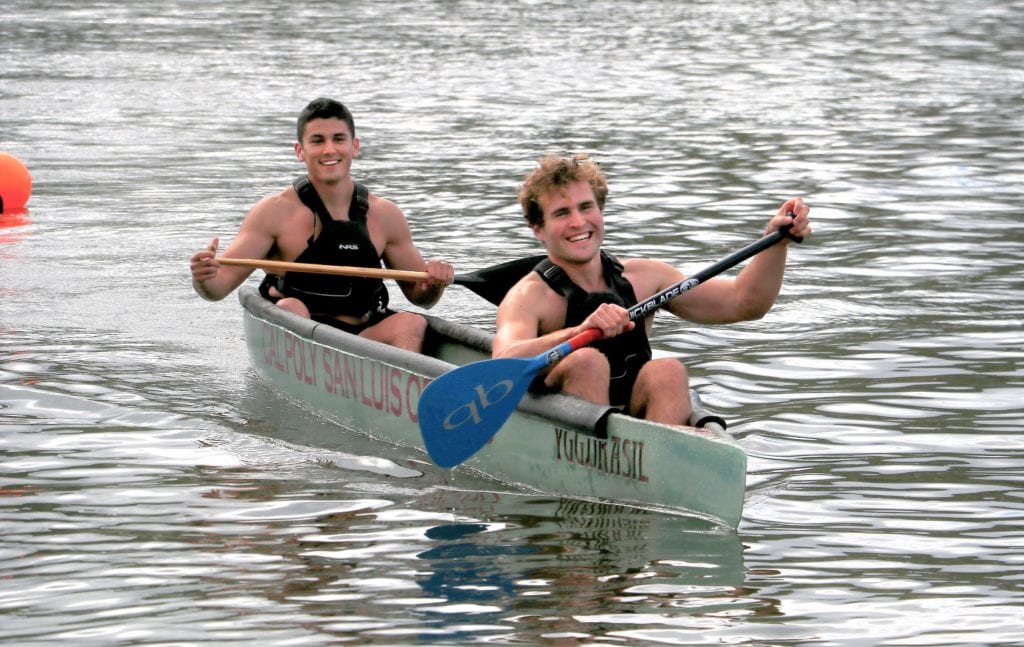
Breipohl was part of Cal Poly’s award-winning concrete canoe team that took first in final product and finished second overall at the 2019 National Concrete Canoe Competition held in Florida. As project manager, the civil engineering senior led the team efforts to design, build and race Yggdrasil, named after the tree of life in ancient Norse mythology. The canoe weighed 183 pounds — its hull thinner than the width of a dime — and measured 19.3 feet. Breipohl was also one of the four paddlers who won four of their five races at the Melbourne, Florida, event. “I am so proud of the team and everything that we accomplished this year,” he said. “We had a smaller team, so every member played a huge role. The team worked countless hours and embraced challenges along the way to continue the Cal Poly Concrete Canoe Team legacy.” That legacy includes a fistful of national titles earned in 2010, 2011, 2012, 2017 and 2018. Breipohl, who will graduate in June, chose Cal Poly “because it has one of the top civil engineering programs in the nation, and I really liked the Learn by Doing approach.” Growing up so close to Sacramento makes it special to be part of the group that will be honored at the Capitol. “I have met so many incredible people during my time at Cal Poly and am grateful for all the opportunities and experiences the school has provided me,” the 21-year-old said.
Kara Hewson
Ventura, California
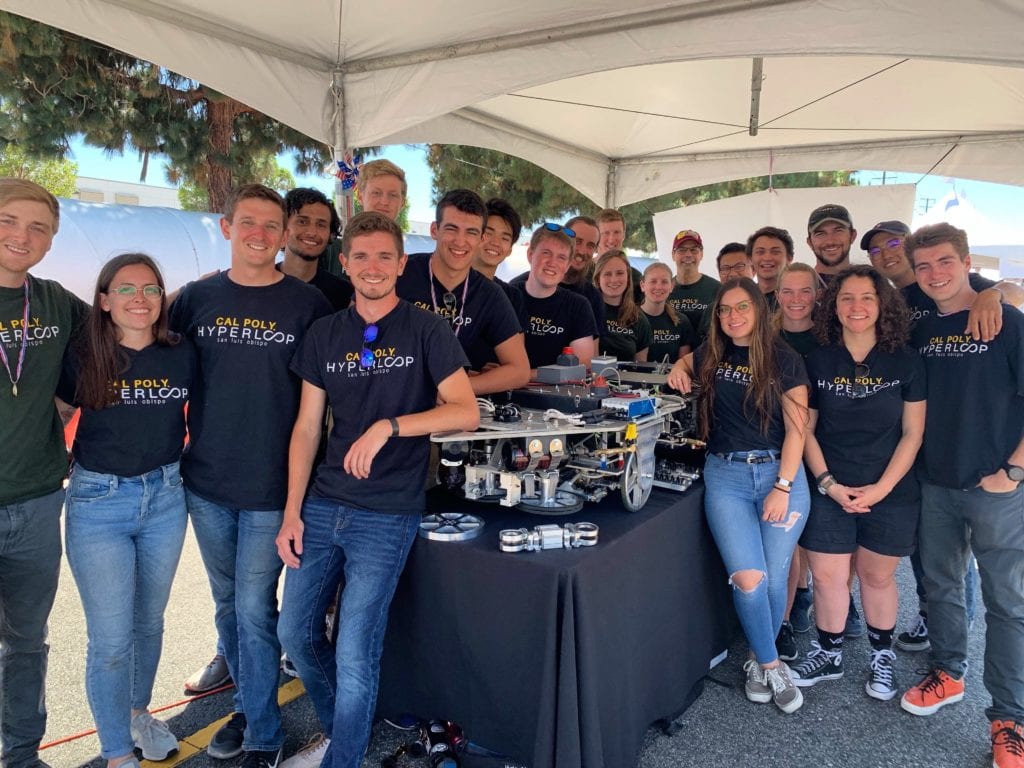
The mechanical engineering senior is president of Cal Poly Hyperloop, a club with 80 active members who work on pod design, manufacturing, marketing and more. SpaceX, known for its electric vehicles and space rockets, hopes to revolutionize terrestrial transportation with a Hyperloop — a sealed, extremely low-pressure tube that could transport people and freight at high speeds over long distances. The Hawthorne, California-based company conceives of a Hyperloop from San Francisco to Los Angeles with pods capable of traveling at the speed of sound. At 760 mph, such a trip would take about a half hour. Last fall, the group began designing the world’s first Hyperloop pod capable of magnetic levitation and cold gas propulsion. Students hope to complete the fully integrated pod this spring. Last year at this time, Hewson and her peers were completing work on a different pod for the fourth SpaceX Hyperloop Pod Competition. The Cal Poly team was among 22 finalists — including MIT, Purdue and the Technical University of Munich — chosen from more than 700 entries worldwide. Although it wasn’t among the handful of schools selected to conduct test runs on the milelong SpaceX Hyperloop track, Cal Poly’s invitation was a remarkable accomplishment for a group that wasn’t even a year old. The project presented a number of technical challenges that students needed to overcome: heat doesn’t dissipate in a vacuum, extremely high current can melt some electronics, high speeds cause vibrations that could tear the pod apart, and the pod must be completely autonomous after the team hits go, to name a few. Hewson said Cal Poly Hyperloop provides the opportunity to fully embrace Learn by Doing “by participating in a global competition to challenge existing engineering solutions alongside other prestigious universities.” She is looking forward to meeting with state lawmakers “to represent the hard-work my colleagues and I have put into designing and building a pod for our very first year in the Hyperloop Competition,” the 21-year-old said. “This showcases the amazing engineering and physics talent within our Hyperloop team and within the Cal Poly community.” She chose Cal Poly as much for “its hands-on learning” as for its “friendly environment.” Hewson plans to graduate in December.
Alex Krenitsky
Piedmont, California

Krenitsky is part of a five-member team of mechanical engineering students working on NASA’s Moon to Mars Ice & Prospecting Challenge, which aims to further the agency’s goal of prolonged space missions. Humans haven’t been on the moon since Apollo 17 landed in 1972. Meanwhile, a 34 million-mile voyage to Mars has previously only been a far-fetched fantasy. But NASA’s primary goals include returning humans to the moon by 2024, having a sustainable human presence there by 2028, and eventually landing astronauts on the Red Planet. Prolonged stays in space, though, may ultimately hinge on finding and harvesting water — which is critical for sustaining life. Krenitsky and the others, who began working in early October, submitted a 34-page report summarizing their project: Sub-lunar Tap-Yielding eXplorer (STYX). “We took on a very accelerated pace for the project, and the scope is massive,” said Krenitsky, who leads the linear motion and drilling systems effort. “We paid for our success in sleep, but it was worth it, and we are excited to continue the grind.” Armed with a $10,000 NASA development grant, the students are building and testing their systems. In June, they’ll travel to NASA’s Langley Research Center in Hampton, Virginia, to perform a technology demonstration of their prototype’s capabilities. The goal is to extract as much water as possible from the simulated slices of lunar and Martian surfaces. The 22-year-old is excited to discuss his team’s efforts during the trip to Sacramento. “Both Piedmont and Cal Poly have been welcoming places to me, and I feel honored to be considered a good ambassador for the university,” he said. “The College of Engineering is extremely supportive to all its students, and I look forward to recognizing Cal Poly’s efforts to train professionals in their fields.” Krenitsky was attracted to the university by its highly ranked engineering program and Learn by Doing philosophy. “I toured the college before attending and was completely impressed with how Cal Poly resources were made available to students for any purpose, trusting us to make the most of those opportunities,” he said. “A perfect example is the mechanical engineering machine shops, which provide necessary training and tooling to any student for club, class or even personal projects.” He is pursuing a master’s degree in mechanical engineering through the Cal Poly’s blended degree program and expects to graduate with both degrees in the spring of 2021.
Kyra Schmidt
Irvine, California

Schmidt and her teammates’ yearlong project to shatter a 27-year-old speed record at international competition in Nevada last September was not without drama. On their last possible run after six days of attempts, their human-powered vehicle, nicknamed Ambition, broke the American collegiate speed record during the 20th annual World Human-Powered Speed Challenge in Battle Mountain. The new record, 63.68 mph, eclipsed the previous mark of 61.29 mph, set by a team from UC Berkeley in September 1992. While Cal Poly has had a human-powered vehicle team since 1978, this was the first time it attempted to set a speed record at Battle Mountain — an optimum location in central Nevada thanks to its thin air at 4,619 feet, which reduces aerodynamic drag. After working on the vehicle for a year, the team had to make multiple significant changes in the days leading up to the race, adding a windshield and fixing a chain that repeatedly fell off. “We had issues, but we knew we had time to fix them,” said Schmidt, the team’s manufacturing lead and a mechanical engineering senior. The day before leaving for Nevada, though, they had a promising test run, Schmidt said, which gave them confidence. This year, the team hopes to return to Battle Mountain and set an even faster record: 70 mph. The effort to create — she and a teammate developed the frame of the recumbent bicycle — was an offshoot of the Learn by Doing philosophy that first attracted her to Cal Poly. “I knew I wanted to go to a school where I could get involved in and outside of classes,” she said, “and when I toured the school, I saw all of the varied clubs, labs and projects students were working on. I wanted to be a part of it.” With fewer than 16 weeks until graduation, she’s looking forward to this Sacramento visit. “It is a huge honor to be able to represent Cal Poly and the Mechanical Engineering Department on such a high level,” the 23-year-old said. “I have learned and grown so much in my time here, and I am extremely grateful for the opportunity to be able to showcase that. I would not be where I am today without all of my mentors, professors, coworkers and teammates at Cal Poly — and I hope to represent them well.”
Sydney Strong
Rancho Bernardo, California
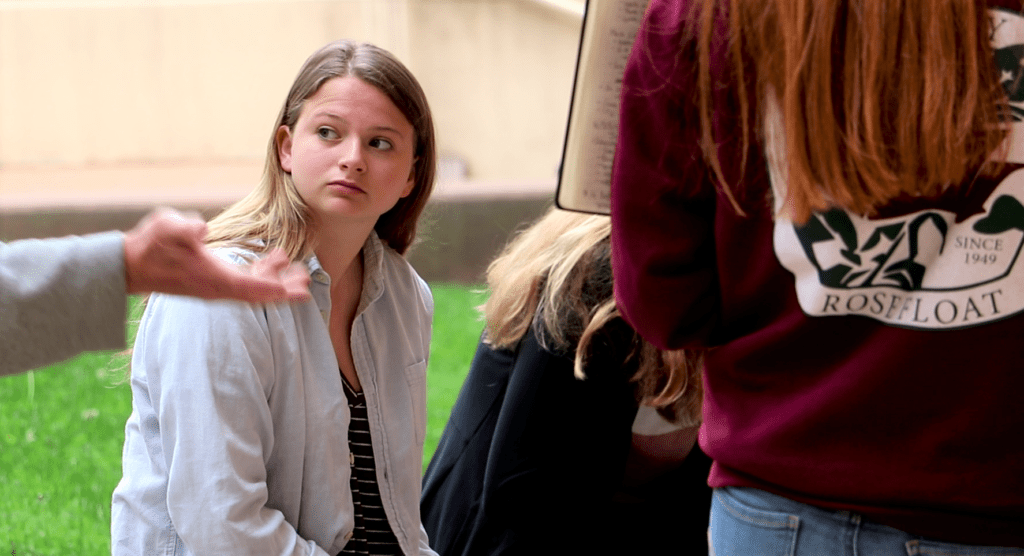
Strong is the 2019-20 president of Cal Poly Rose Float, one of the university’s oldest and best-known clubs on campus and off. It partners with California State Polytechnic University in Pomona each year (since 1948) to create a massive bouquet to the world that rolls down Colorado Boulevard each New Year’s Day. The Cal Poly universities’ playful “Aquatic Aspirations” received the Director Award for the most outstanding artistic design and use of floral and non-floral materials at the recent 131st annual Pasadena classic. The float featured a submarine exploring a sunken shipwreck that is also home to a colorful array of marine wildlife. “We’ve never won the Director Award before,” said the industrial engineering senior. “It’s both related to the design and the decorations of the float.” The Rose Parade® venue provides perhaps the highest profile event for Cal Poly students. Parade officials estimate that 700,000 people see the parade in person, while 37 million Americans and an international audience of 28 million tune in to watch it on TV. The Learn by Doing ethos is exemplified in all facets of the float program, as students in technical and non-technical majors get hands-on experience welding, metal shaping, machining, foam carving, woodworking, painting and flower harvesting — ultimately competing on an international stage against professional float builders with corporate sponsorships. Strong, 21, is proud to represent the club, the university and the College of Engineering. “It is exciting to see the recognition that Cal Poly Rose Float has received both on the university level and beyond,” said the resident of a suburb on the northern edge of San Diego. “I am excited to share my experiences at Cal Poly with state lawmakers,” she said. Strong plans to graduate in June.
Noah Wheeler
Shaker Heights, Ohio
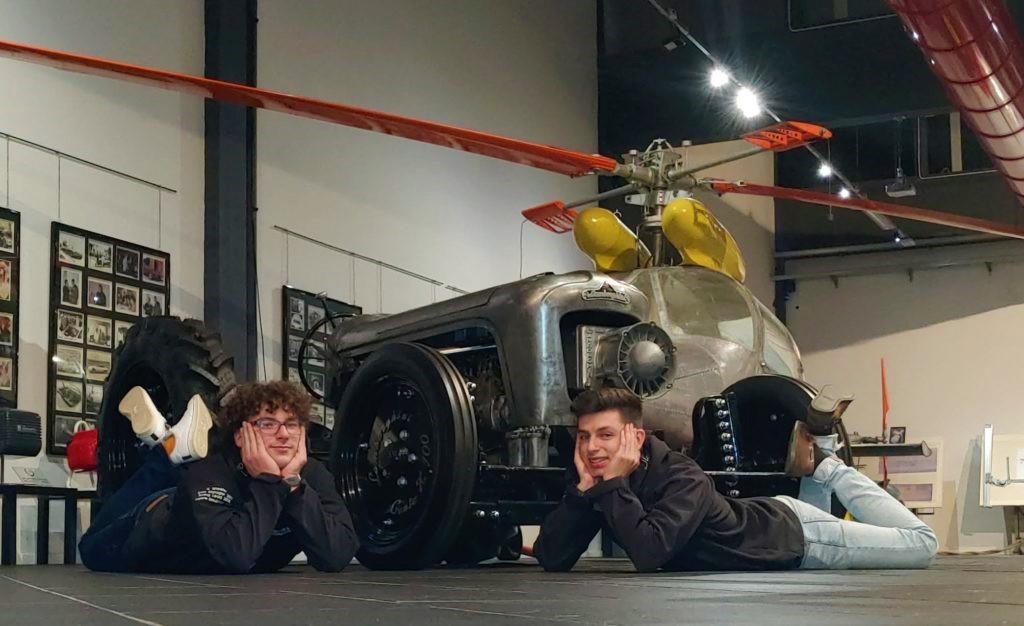
Wheeler and another Cal Poly Racing Team student were the first Americans to win the VI-grade Virtual Formula competition for electric race cars. The 23-year-old and teammate Carl Stoye, both mechanical engineering students, won the international competition by using VI-grade vehicle dynamics software to optimize a virtual formula car to compete in a series of race events. They edged out teams from Brazil, China, Germany, Greece, Italy and Spain. “The competition has been run for 10 years or so now, and this is the first time that an American team has won,” Wheeler said. Winners are invited to the annual VI-grade International Conference and the Maserati Innovation Lab in Modena, Italy — an area in the Po Valley known as much for its balsamic vinegar and opera heritage as it is for Ferrari and Lamborghini sports cars. While in Italy, the pair toured some other famous car sites as well, including Ferrari and Lamborghini museums and the Pagani factory, said Wheeler, who also trekked to the Dallara race car factory and Stuttgart, Germany, to visit another student formula racing team and friends who work at HWA AG, which runs the motorsports program for Mercedes-AMG. Cal Poly Racing teams design, manufacture and test three innovative race vehicles — two formula cars and a Baja off-road vehicle — every year and compete across the United States. VI-grade supports the program with multiple software licenses. “We are able to use the software to gain a competitive advantage through simulation both in the design phase and the driving phase,” he said. “Knowing the software makes us and other Cal Poly Racing students very desirable to companies utilizing the software.” The 23-year-old chose Cal Poly because of the racing team and Learn by Doing so he “could immediately get involved in racing and start learning both in and out of the classroom.” He looks forward to sharing with elected representatives his affiliation with both the university and racing team.

